Posts Tagged: egg
The Joy of Rearing Monarchs
The monarch butterfly egg is oh-so-very-tiny but what an incredible work of nature! The intricate egg is about the size of a pinhead, 0.9mm wide...
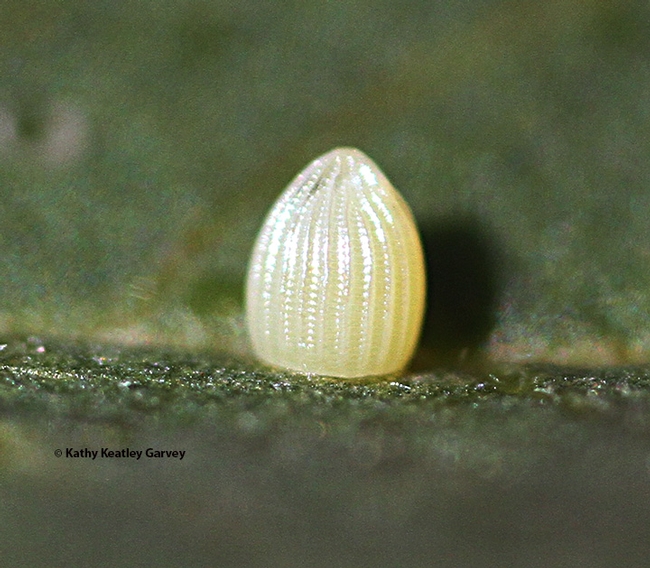
This is a close-up of a monarch egg, taken with a Canon MPE-65mm lens. It is about the size of a pinhead. (Photo by Kathy Keatley Garvey)
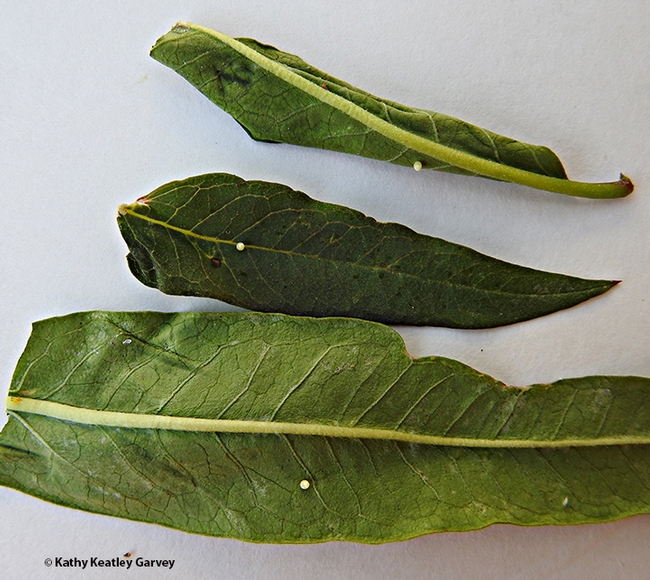
Three monarch eggs, one on each milkweed leaf (tropical milkweed Asclepias curassavica). (Photo by Kathy Keatley Garvey)
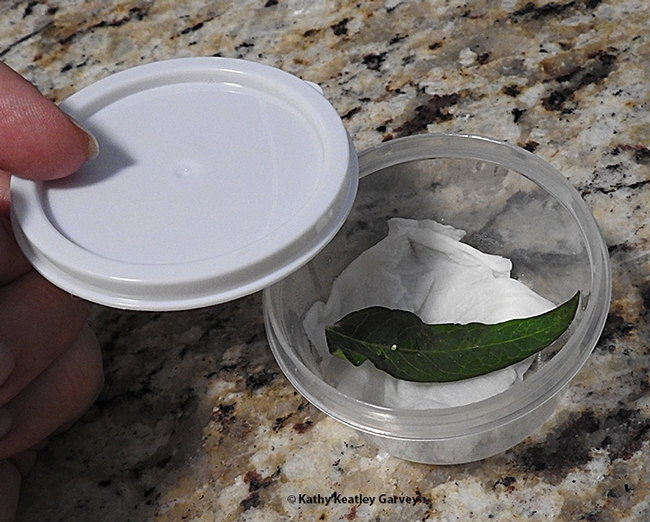
This is the small container that the Garvey family uses to rear monarch eggs. It is about 2 inches wide. (Photo by Kathy Keatley Garvey)
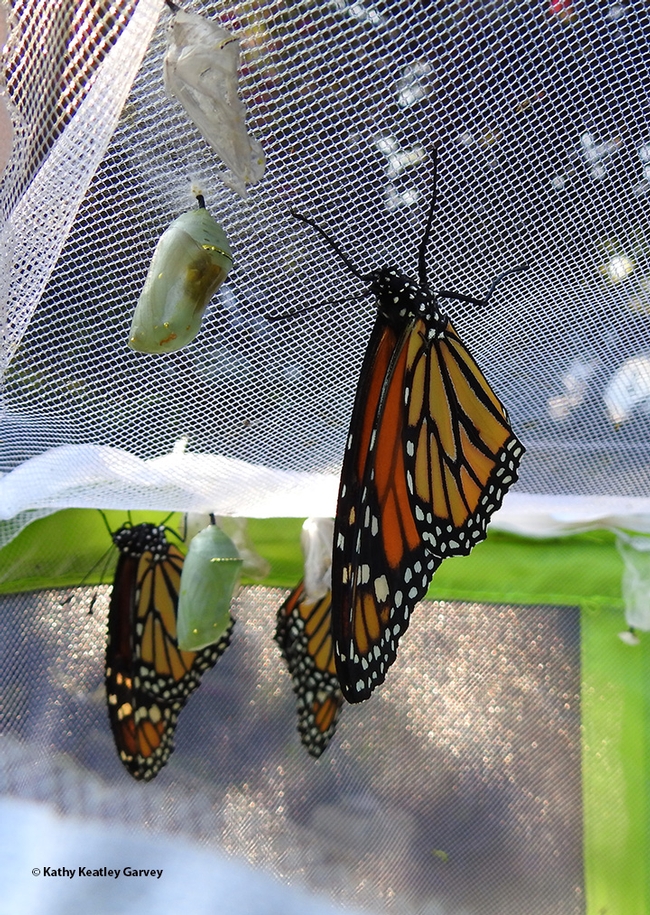
Be aware that if you collect a monarch caterpillar or chrysalis, it may already be parasitized. It is better to start with the egg, says Bohart Museum of Entomology associate Greg Kareofelas. Note the tachinid-infested chrysalis (brown spot). This image, taken in July 2020, shows two chrysalids and three newly eclosed monarchs. (Photo by Kathy Keatley Garvey)
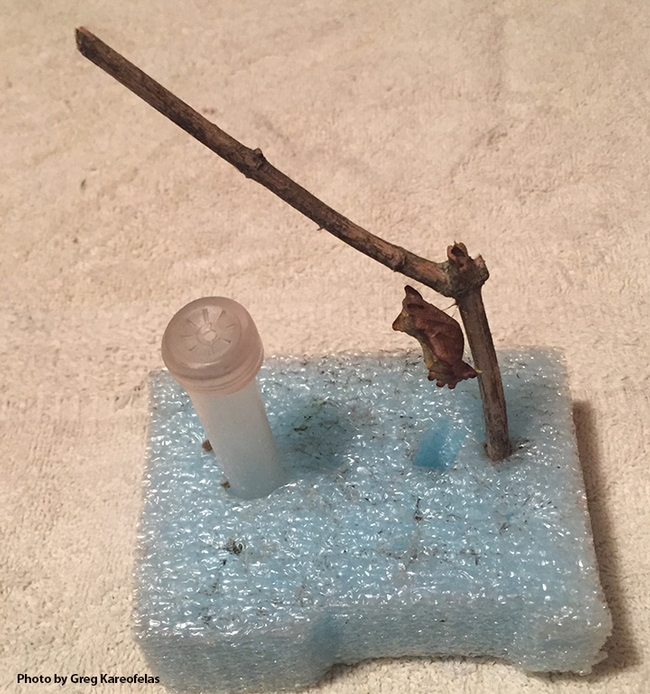
This is part of the Greg Kareofelas setup to rear butterflies. He rears many species. Note the packing foam and chrysalis (not a monarch). (Photo by Greg Kareofelas)
A Little Brown, Carefully Wrapped Package in the Garden
The predator and the prey... Or the predator-to-bee. Currently, honey bees are foraging on our tower of jewels, Echium wildpretii, in our family's...
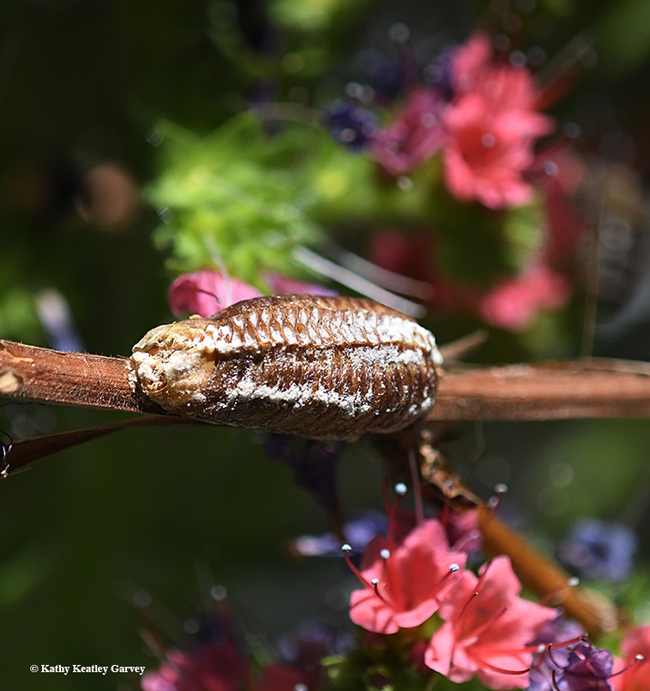
A praying mantis egg case, ootheca, on the tower of jewels, Echium wildpretii. (Photo by Kathy Keatley Garvey)
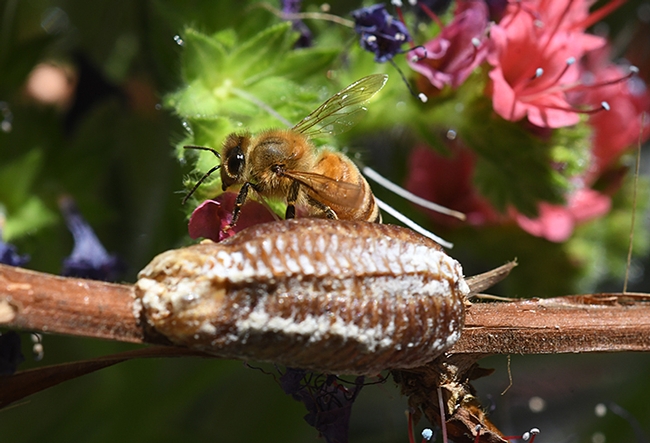
A honey bee steps over a praying mantis egg case, an ootheca. (Photo by Kathy Keatley Garvey)
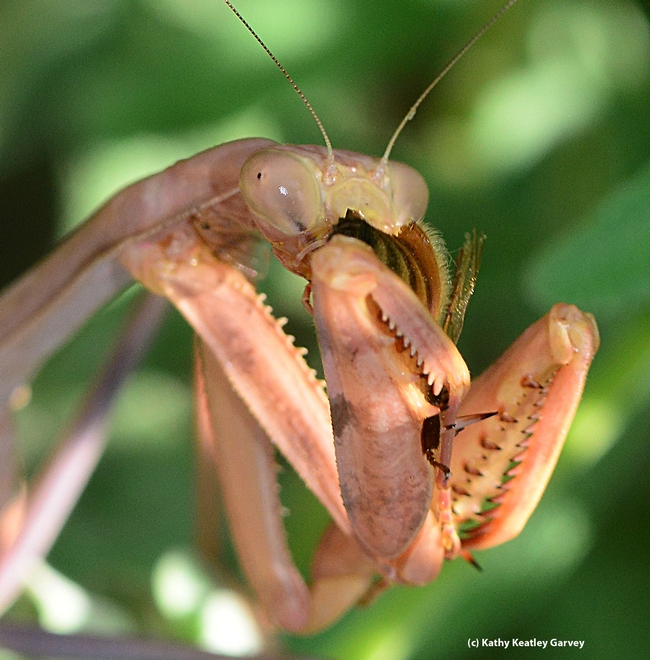
A praying mantis dining on a honey bee in Vacaville, Calif. (Photo by Kathy Keatley Garvey)
Independence Day for a Monarch
Have you ever seen a monarch butterfly eclose? It's a magical moment. First an egg, then a caterpillar, then a chrysalis, and then a butterfly,...
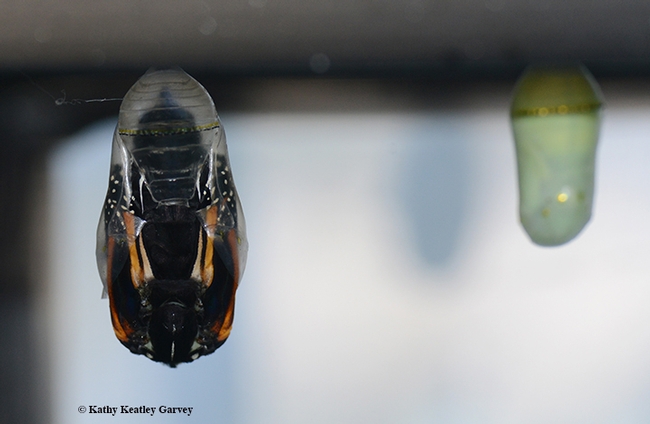
The monarch chrysalis bulges, a sure sign that eclosure is imminent. At right is a newly formed green chrysalis. (Photo by Kathy Keatley Garvey)
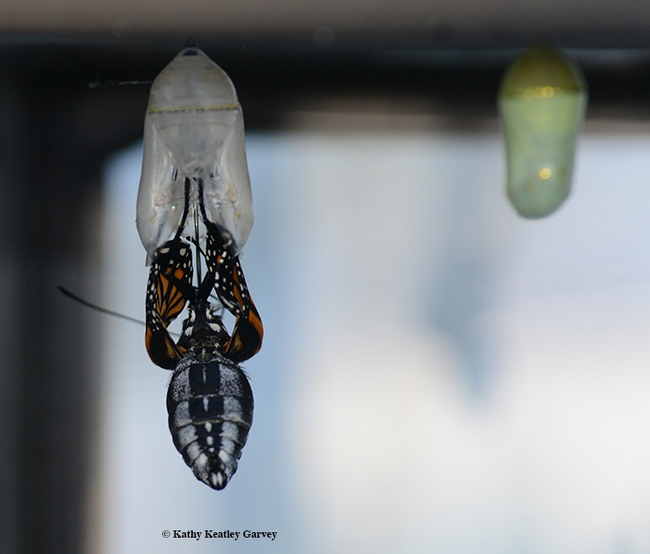
Out it slides. Swoosh! (Photo by Kathy Keatley Garvey)
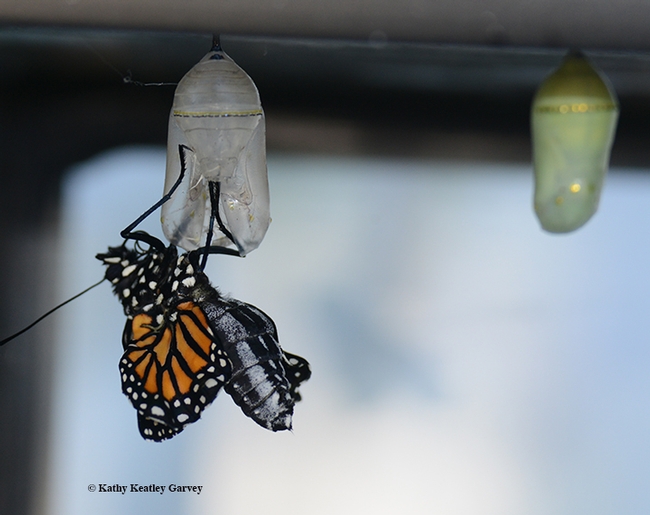
Time to wiggle around. Welcome to the world! (Photo by Kathy Keatley Garvey)
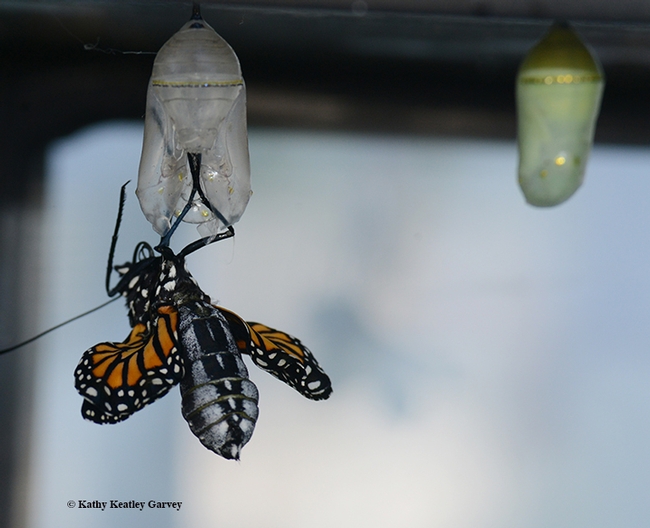
Time to pump up the wings. (Photo by Kathy Keatley Garvey)
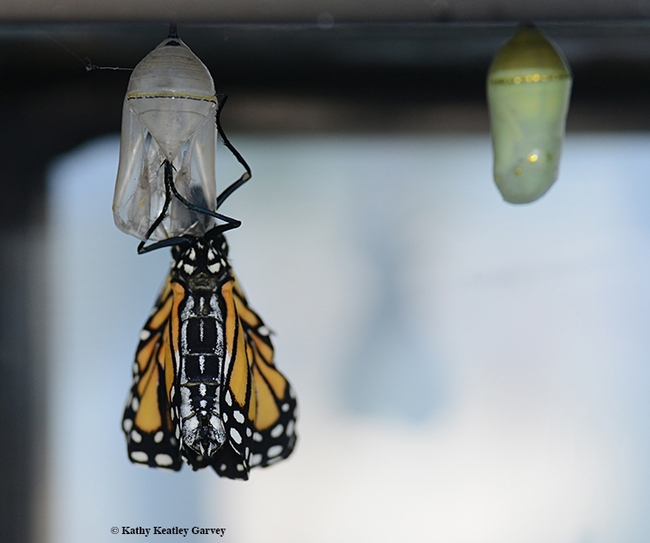
Just you wait, soon I'll be a familiar looking butterfly. (Photo by Kathy Keatley Garvey)
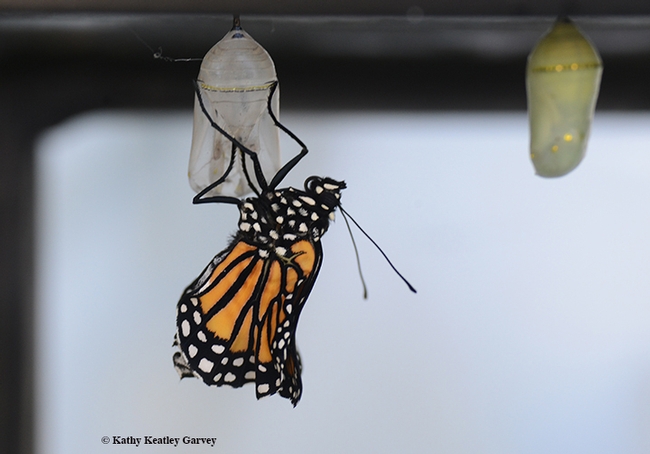
I'm swinging and swaying. (Photo by Kathy Keatley Garvey)
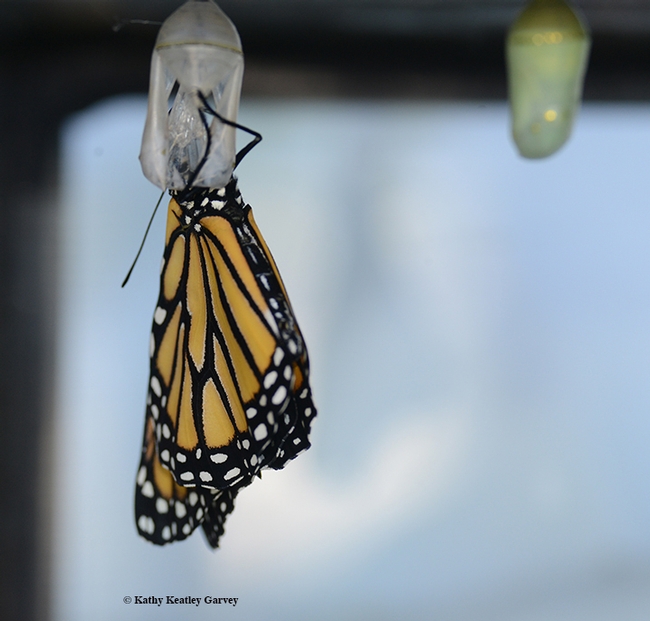
Ah, as soon as I dry, I'll be off and long gone. (Photo by Kathy Keatley Garvey)
California Wild Fires Raging...but Life Cycles Go On...
As those horrendous wild fires continue to rage throughout California, as Cal Fire helicopters roar over, as residents scramble from their...
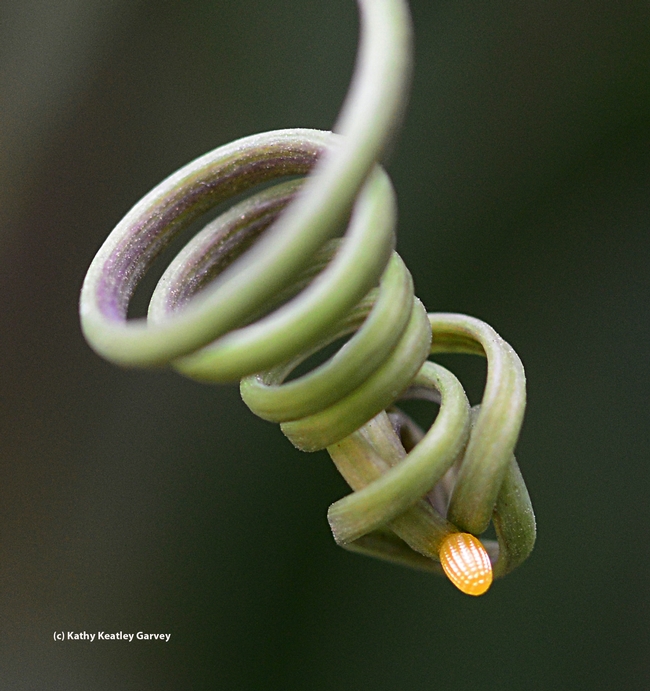
A Gulf Fritillary egg on the tendrils of the passionflower vine (Passiflora). (Photo by Kathy Keatley Garvey)
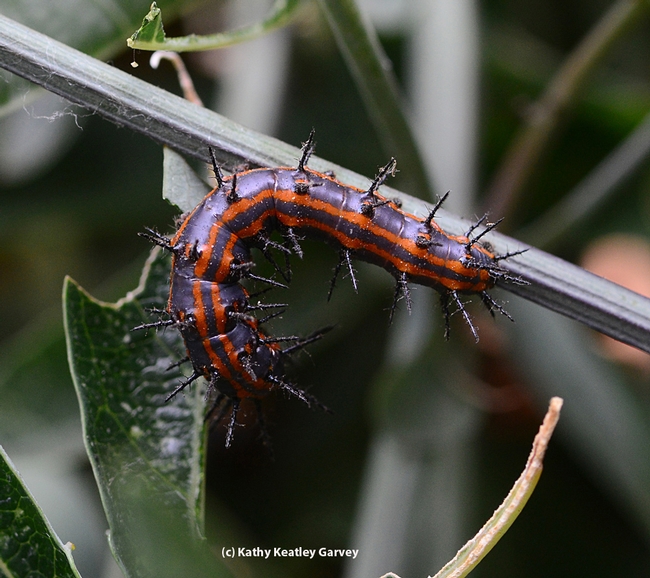
A Gulf Fritillary caterpillar continues to munch the Passiflora leaves. (Photo by Kathy Keatley Garvey)
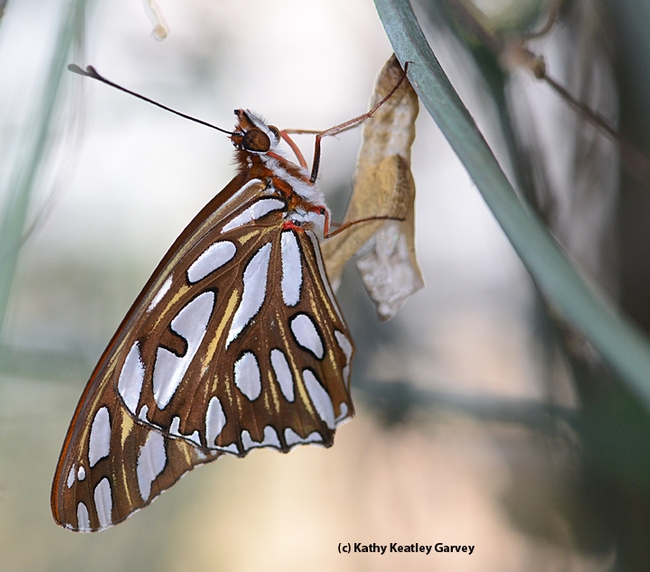
A newly eclosed Gulf Fritillary clings to its pupal case. (Photo by Kathy Keatley Garvey)
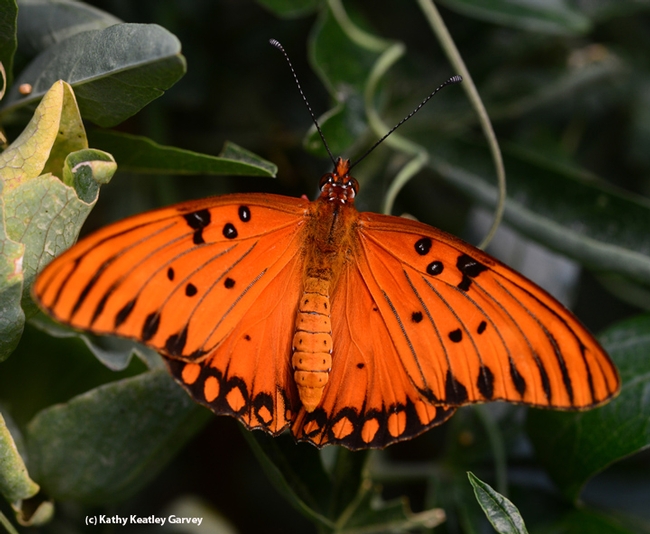
In the eerie light of the smoke-choked sky and reddish sun, a newly eclosed Gulf Fritillary spreads its wings. (Photo by Kathy Keatley Garvey)
A Delightful Find
Any day's a good day when you find the ootheca (egg case) of a praying mantis in your yard. It's much better than finding an Easter egg. Ootheca...
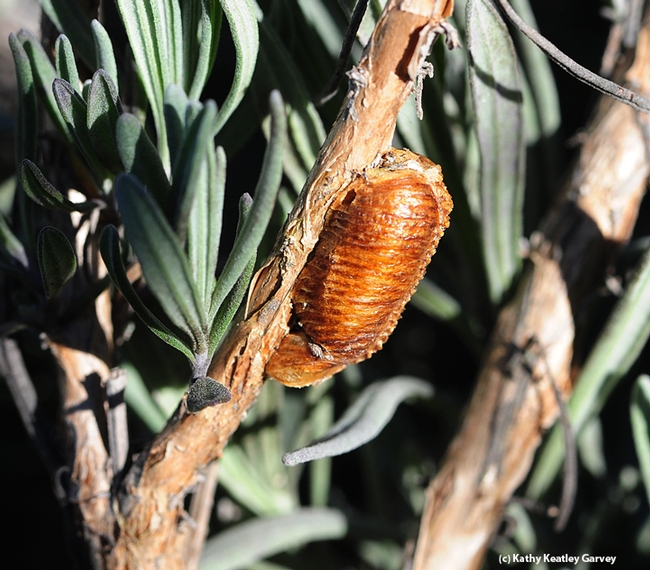
The egg case or ootheca of a praying mantis, is attached to the stem of a lavender plant. Note the small hole on the left, near the top--the exit hole of a parasitoid, according to Lynn Kimsey, director of the Bohart Museum of Entomology at UC Davis. (Photo by Kathy Keatley Garvey)
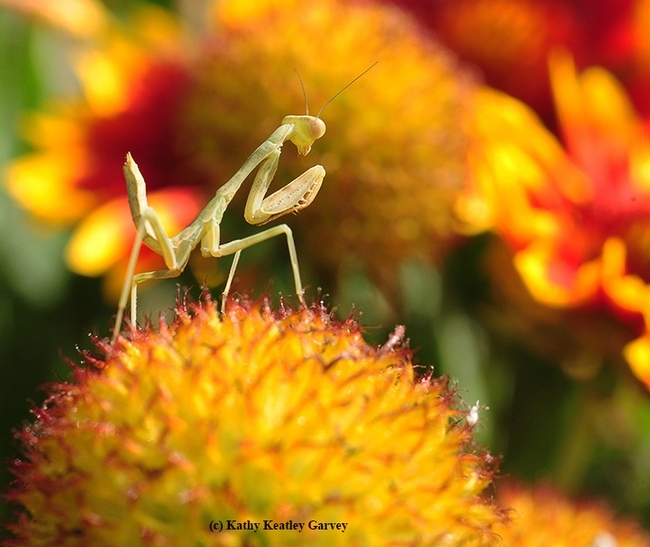
A young praying mantis searching for prey on a blanket flower, Gallardia. (Photo by Kathy Keatley Garvey)
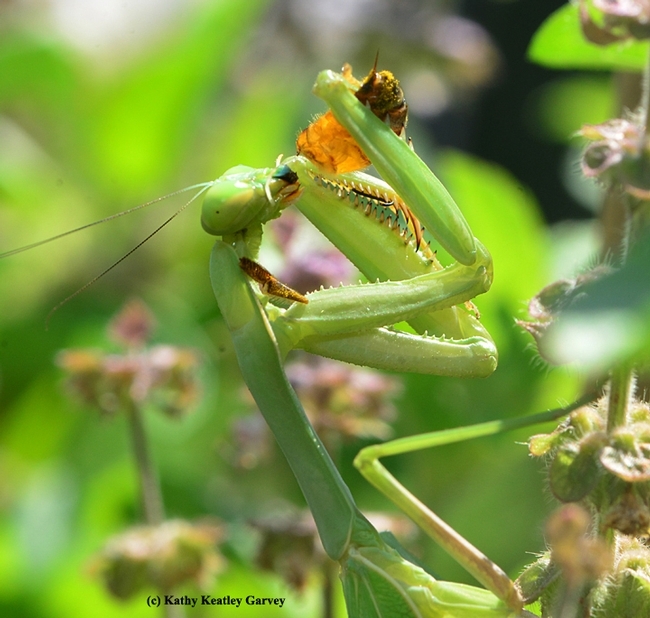
A praying mantis dining on a honey bee. (Photo by Kathy Keatley Garvey)

